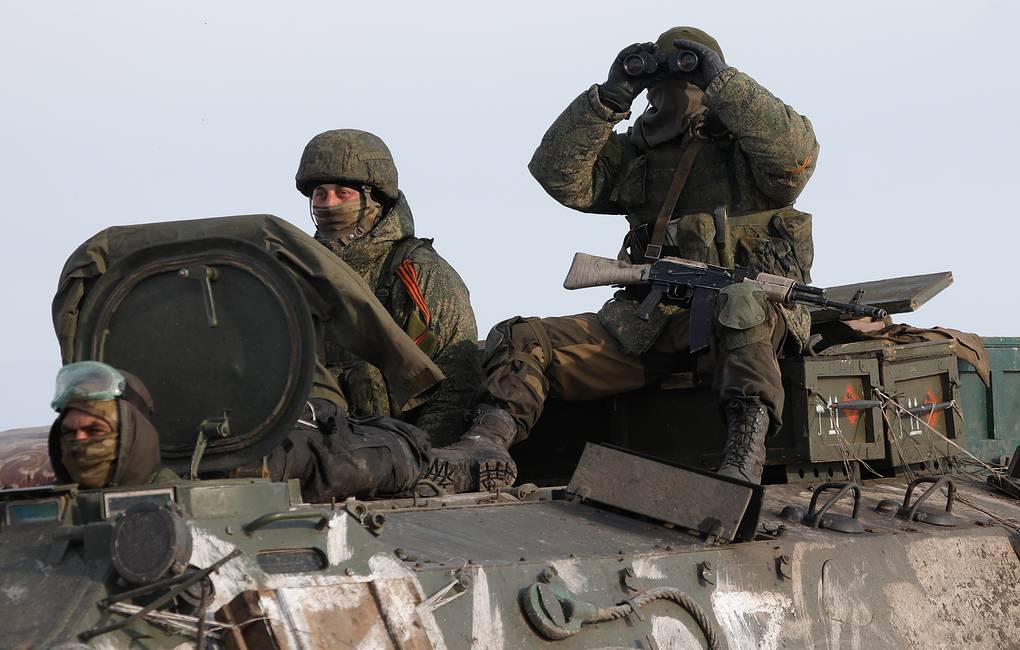Russian border regions have been subjected to frequent drone and missile attacks, as well as shelling by the Ukrainian military, since the start of the conflict between Kiev and Moscow. One of the deadliest attacks took place on December 30, when Kiev’s forces struck the Russian border city of Belgorod with multiple rocket launchers, including the RM-70 Vampire – an upgraded heavier version of the Soviet BM-21 Grad system.
A December strike claimed the lives of 25 people, including children, and left more than 100 injured. In January, another massive strike hit the city of Donetsk, killing 27 civilians. Both attacks were condemned by the UN.
“This [demilitarized] line should … lie at such a distance from our territory that it would ensure the security [of Russian cities],” the president said on Wednesday, adding that he was specifically referring to protection from “foreign-made longer-range weapons that the Ukrainian authorities use to strike peaceful cities”.
According to Putin, Russian forces fighting on the frontlines were pushing Kiev’s troops away from Russian borders to safeguard national security.
“This is the main mission for our guys: to protect their homeland, to protect our people.”
The “demilitarization” and “denazification” of Ukraine were cited as the major goals of Russia’s ongoing military campaign from the very beginning. Putin specifically mentioned a demilitarized or “sanitary” zone that was to be created in Ukraine in June 2023. At the time, the Russian president said that this zone could be created if Kiev’s forces continue to launch attacks at Russian cities. The goal of this move would be to make it impossible for the Ukrainian military “to reach us”, he added.
The US and its allies have been actively supplying Ukraine with heavy weapons throughout the conflict that ranged from howitzers and various artillery pieces to multiple rocket launchers and missile systems.
The list of the longer-range Western-made weapons in Kiev’s possession include the British-made Storm Shadow missiles that have a range of 250km (155 miles) and the US-made Army Tactical Missile Systems (ATACMS), which have a range of up to 160 kilometers (100 miles).
Earlier this week, Politico reported that Washington could provide Kiev with Ground Launched Small Diameter Bombs (GLSDB), which also have a range of around 160 kilometers (100 miles).
Military intelligence chief Kirill Budanov told The Telegraph on Tuesday Ukrainian forces will go on the offensive against Russia once more in the spring. It remains unclear how Kiev will acquire the weapons or the half a million men it needs to cover its losses after last summer’s failed counteroffensive.
Budanov claimed that Russia’s offensive operations around the Donbass settlements of Kupyansk, Liman, Artyomovsk (called Bakhmut in Ukraine), and Avdeevka will be “completely exhausted” by “early spring.”
“We make a move, the enemy makes a move,” he said, adding, “Now is the enemy’s turn. It will end, and then ours will start.”
Ukraine’s last counteroffensive began in June and lasted until around October, with Ukrainian forces attempting to penetrate Russia’s defensive lines at multiple points across Kherson, Zaporzhye, and Donetsk Regions. It failed to achieve any significant territorial gains and cost Kiev around 160,000 lives, according to figures from the Russian Defense Ministry.
This time around, the Ukrainian military would be heading into battle with much of its Western-provided hardware destroyed and its best-trained troops replaced with inexperienced conscripts, all while continued military aid from the US remains uncertain. Even now, the situation at the front is “dramatic,” anonymous “generals and soldiers” told Germany’s Die Welt newspaper last week, citing shortages of vital ammunition and fresh recruits.
Ukrainian President Volodymyr Zelensky announced plans last month to mobilize around 500,000 new conscripts to cover those lost since the beginning of the conflict almost two years ago. While Ukraine does not publish casualty figures, the Russian Defense Ministry places Kiev’s losses since February 2022 at nearly 400,000 men. Aleksey Arestovich, a former aide to Zelensky, put the figure at up to 300,000.
Zelensky’s top general, Valery Zaluzhny, described the battlefield situation in November as a “stalemate”, a comment that reportedly angered Zelensky. Acrimony between the two men exploded into the headlines this week when Zelensky reportedly fired – then rehired – Zaluzhny, all while Kiev’s censorship office dismissed the story as a baseless rumor aimed at “destroying the unity of Ukrainian society”.
However, American officials told Bloomberg earlier this month that the rift between the president and the general was real, and was “slowing efforts to crystallize a new strategy” for the coming year.
According to British newspaper The Times, Zaluzhny’s position was offered to Budanov, who declined. Had Zelensky replaced Zaluzhny with Budanov, he would have swapped a cynic with someone who shares his “messianic” belief in a military victory over Russia, as Zelensky’s aides described his vision in a Time magazine article last year.
It is unclear whether Zaluzhny, like Budanov, believes that Ukraine will be able to launch a counteroffensive this spring.
